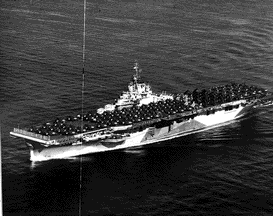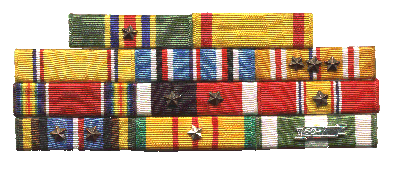SEARCH SITE
FOR ANY
INFORMATION

CONTACT US FOR:
=
Reunion Information
=
Addition To Mail List
=
Add Information to
THIS SITE
HISTORY
NAVAL HISTORICAL CENTER
TODAY IN U.S. NAVAL HISTORY
CLOSE NEW WINDOW TO RETURN HERE
From: Dictionary of American Naval Fighting Ships
Bennington:
Bennington is a city in Vermont and a battle of the American Revolution (16 August 1777).
To see more read THE BATTLE OF BENNINGTON
|
|
CV / CVA / CVS - 20 USS Bennington |
|
|

|
|
(CV-20: dp. 27,100; 1. 872'; b. 93'; w.
147' 6"; dr. 28'7";
s. 32.7 k.; cpl. 3448; a. 12 5"; cl. Essex)
On August 16, 1777, one of the most historic battles Of the Revolutionary War took place near Bennington, Vermont. On 15 December 1944, Bennington got underway from New York and transited the Panama Canal on the 21st. The carrier arrived at Pearl Harbor 8 January 1945 and then proceeded to Ulithi Atoll, Carohne Islands, `There she joined TG 58.1, 8 February. Operating out of Ulithi she took part in the strikes against the Japanese home islands (1~17 and 25 February), Volcano Islands (18 February - 4 March), Okinawa (1 March), and the raids in support of the Okinawa campaign (18 March-11 June). On 7 April Bennington's planes participated in the attacks on the Japanese task force moving through the East China Sea toward Okinawa which resulted in the sinking of the Japanese battleshipYamato, light cruiser YAHAGI, and four destroyers. On 5 June the carrier was damaged by a typhoon off Okinawa and retired to Leyte for repairs arriving 12 June. Her repairs completed, Bennington left Leyte 1 July and during 10 July-16 August took part in the final raids on the Japanese home islands. Please Read: She continued operations in the western Pacific, supporting the occupation of Japan until 21 October. on 2 September her planes participated in the mass flight over Missouri (BB 63) and Tokyo during the surrender ceremonies. Bennington arrived at San Francisco 7 November 1945 and 13-17 March 1946 transited the Panama Canal enroute to Norfolk. Following pre-inactivation repairs, she went out of commission in reserve at Norfolk 8 November 1946. Operational and Combat The carrier began modernization at New York Naval Shipyard 30 October1950 and was recommissioned 13 November 1952. Her shake down lasted until May 1953 when she returned to Norfolk for final fleet preprations. Between 14 May 1953 and 27 May 1954 she operated along the eastern seaboard, made a midshipman cruise to Halifax, Nova Scotia, and a cruise in the Mediterranean. The following information is provided directly from articles,
which I've researched. On 26 May 1954, while cruising off Narragansett Bay, the
fluid in one of her catapults exploded setting off a series of secondary
explosions which killed 103 crewmen and injured 201 others. Bennington proceeded
under her own power to Quonset Point, R. I., to land her injured. Moving to New York Naval Shipyard for repairs she was completely rebuilt during 12 June 1954 - 19 March 1955. On 22 April 1955 the Secretary of the Navy came aboard and presented medals and letters of commendation to 27 of her crew in recognition of their heroism on 26 May 1954. Bennington, returned to operations with the Atlantic Fleet until departing Mayport Fla., 8 September 1955 for the Pacific. She steamed by way of Cape Horn and arrived at San Diego one month later. The carrier has since served with the Pacific Fleet making Far Eastern cruises. Of newspaper stories, pictures and other items related to the 26 May 1954 Explosion May 26, 2004 USS Bennington veterans dedicate memorial From The Lancaster News Lancaster, SC By Barbara Bradley - Staff Writer State Of New York Senate Legislative Resolution February 26, 2008 Also Please Read: |
|
|

AWARDED RIBBONS, MEDALS AND COMBAT STARS
PATCHES OF USS BENNINGTON
PATCHES OF AIR GROUPS
AND OTHER PATCHES
If you have ANY HISTORY Information that
you would like to see added to this site,
or if you are trying to find information not found here,
Please contact:
694 Iredel Court
Calabash, North Carolina 28467
jkpires@uss-bennington.org
1 September 1999
Site Created By: